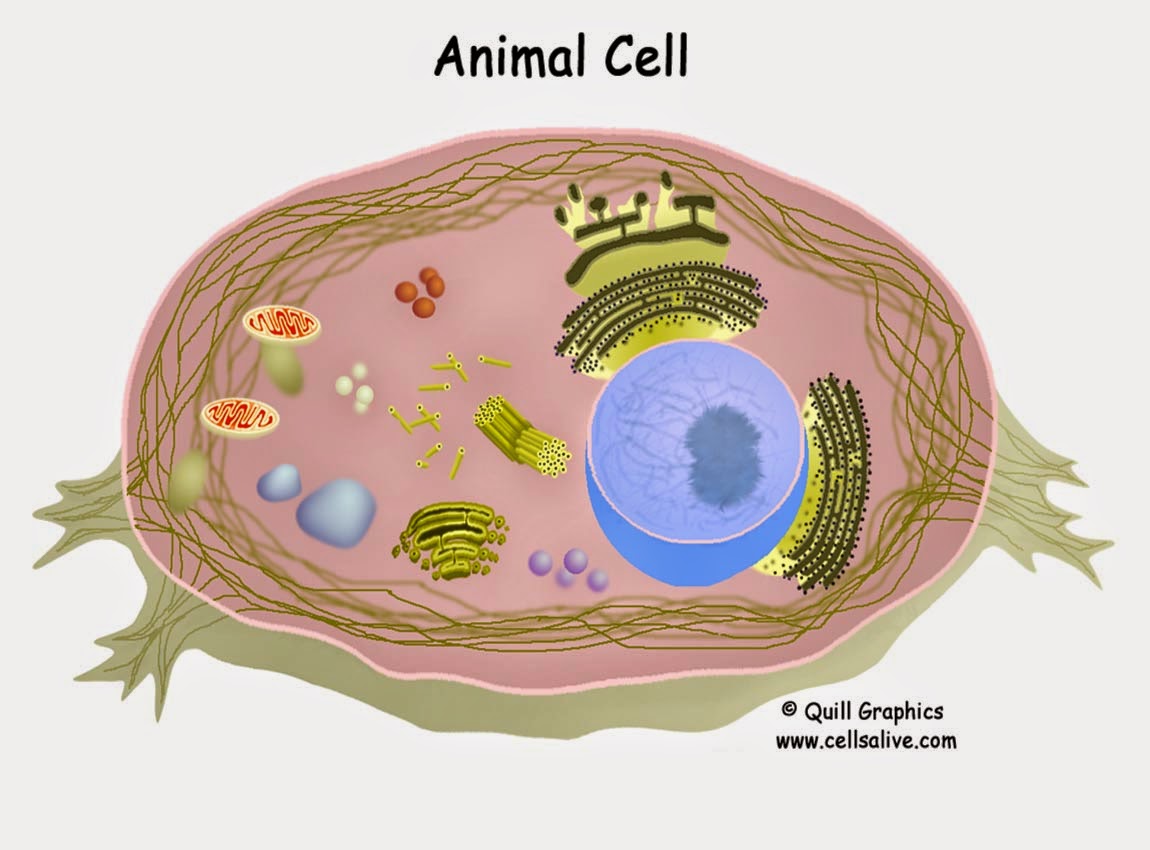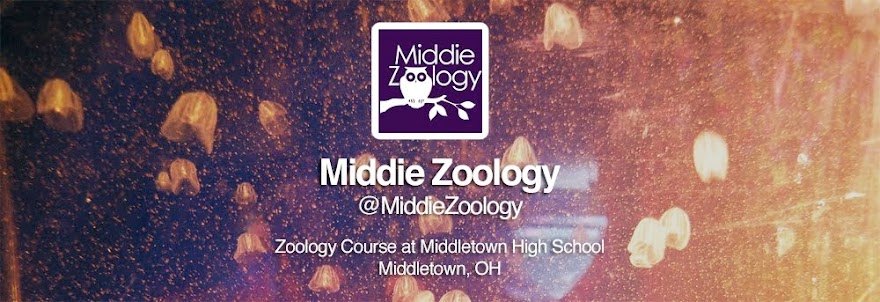Wednesday, December 3, 2014
Tuesday, December 2, 2014
Arthropod Characteristics
Observe some live arthropods (ants, mealworms, spiders, etc.) and some from the previous video clips. Answer the following prompts.
- What characteristics do they all have in common?
- Why are they all grouped together as arthropods? (hint: look at the first question.)
- What do you think the work "arthropod" means?
Horseshoe Crab Blood
- What is special about horseshoe crab blood?
- Why might it be beneficial to humans?
Sunday, November 30, 2014
Ants - Nature's Secret Power
- Watch for physical and behavioral adaptations in ants. Also look for their ecological importance.
- What was the most interesting thing you learned about ants from the video? Why?
- Why do you think humans could benefit from studying ants?
Tuesday, November 25, 2014
Thursday, November 20, 2014
Kingdom of the Leeches
Leeches are so cute!
How can you tell they are annelids?
What lifestyle do they have?
Green Bomber Worms!
How does the green bomber worm defend itself?
What class of annelid does it belong to?
Wednesday, November 19, 2014
Wednesday, November 12, 2014
Tuesday, November 11, 2014
Monday, October 27, 2014
Cladogram
Build your own cladogram.
- You should include the characteristics which separate the different groups, the name of the group, and a picture of a representative animal.
- Start with all animals and include branches for porifera, cnidaria, and ctenophora.
- Do this in a google doc and share with: your partner and blampart@middletowncityschools.com
We will periodically check back and add to the cladogram over the course of the school year.
Thursday, October 23, 2014
How to Treat a Jellyfish Sting
Watch the video and answer the following prompts:
- What is the best way to keep the cnidocytes from firing when someone has a jellyfish sting?
- Why is peeing on a jellyfish sting bad, but using sea water is a good idea?
Jellyfish Invasion
Watch the video and answer the following prompts:
- Why are Jellyfish numbers increasing worldwide?
- What is a bloom?
- Explain how this problem is a result of stress and the life cycle of jellyfish.
- Why should we worry about this?
- How does the venom affect someone?
Tuesday, October 21, 2014
Irukanji - See how a jellyfish sting works.
Answer the following questions:
- What is irukanji syndrome?
- What are the symptoms?
- Why is this a problem?
Friday, October 17, 2014
Sponge Reproduction…Try not to blush.
How do sponges reproduce? Be able to explain how they do it and how their strategy compares/contrasts with that of other animals.
Poriferans Eating! Cool Experiment!
Watch how a sponge filter feeds. You should be able to describe how poriferans eat.
Tuesday, October 7, 2014
Click on the following link to learn how to analyze your bug data.
You will complete the activity and then share your results with Mr. Lamaprt. Remember to ask if you have any questions!
https://drive.google.com/a/middletowncityschools.com/file/d/0BzZ96_ANqgJ7OGs4Y1laTG9Zd00/view?usp=sharing
You will complete the activity and then share your results with Mr. Lamaprt. Remember to ask if you have any questions!
https://drive.google.com/a/middletowncityschools.com/file/d/0BzZ96_ANqgJ7OGs4Y1laTG9Zd00/view?usp=sharing
Wednesday, October 1, 2014
Tuesday, September 30, 2014
Leave it to Beavers
Watch, Leave it to Beavers and respond to the following prompts:
- Why are beavers important to an ecosystem?
- How would an ecosystem with beavers be different if the beavers were gone?
- Why are beavers important to humans?
- A keystone species is a species whose presence and role within an ecosystem has a disproportionate effect on other organisms within the ecosystem. Why are beavers a keystone species?
Monday, September 29, 2014
A World Without Mosquitoes
Read A World Without Mosquitoes and answer
the following questions.
- How
many people are infected with malaria every year worldwide? How many are killed?
- According
to the article, mosquitoes have been around for more than 100 million
years, so what is one problem with simply wiping them out?
- What
types of animals depend on mosquitoes and their larvae as a food source?
- There
are several different opinions given about what would happen if we simply
eradicated mosquitoes from the planet.
What do you think would happen?
What evidence do you have to support your view?
Friday, September 12, 2014
How Much DNA do we Share with Other Living Things?
Click on the link and see if you can figure it out.
Kudos to Dre for asking the question!
http://ngm.nationalgeographic.com/2013/07/125-explore/shared-genes
Kudos to Dre for asking the question!
http://ngm.nationalgeographic.com/2013/07/125-explore/shared-genes
Thursday, September 11, 2014
Great Transformations Video
Click on the Link and watch episode 2 of Great Transformations and answer the following prompts...
http://www.youtube.com/watch?v=D34Q1zGMxDI&list=PL025876CC77CDD9AE&index=5&edufilter=g07LWVBkc46piKtOeijISA
- What are the scientists studying in this video? What types of evidence are they looking at? (List as many as you can. This question is ongoing throughout the video.)
- What evidence supports the evolutionary history of whales? (List as many as you can. This question is ongoing throughout the video.)
- What is a transitional form? What is an example of transitional form?
- Why are scientists studying spines?
- Why are scientists interested in different ways animals travel?
- What evidence can you discuss that shows connections of all living things? Give specific examples.
- Give examples of signposts or key species in the “tree of life”.
- What
allowed major events in life history?
Monday, September 8, 2014
Lamarke vs. Darwin Two Theories of Change
I think you will find the following links useful in answering the writing prompts. The assignment is due Friday 9/13.
Links:
Lamarke:
http://evolution.berkeley.edu/evolibrary/article/history_09
http://necsi.edu/projects/evolution/lamarck/lamarck/lamarck_lamarck.html
Darwin:
http://www.pbs.org/wgbh/evolution/educators/course/session2/explain_c_pop2.html
http://evolution.berkeley.edu/evolibrary/article/0_0_0/history_14
http://dsc.discovery.com/tv-shows/curiosity/topics/10-examples-natural-selection.htm
Evolution writing prompt!
Respond to the following writing prompts. Be sure to include supporting details. Be specific. You need to write between a half a page and a page to answer this. You may use the textbook CH 4 and/or the internet as a resource.
1. Who would have agreed with the following statement? “Elephants stretched their noses and passed on the long nose trait until their descendants had a long nose called a trunk.”
2. Who would have agreed with the following statement? “Elephants with longer noses were able to survive and have more offspringthan elephants with shorter noses.”
3. Who would have agreed with the following statement? “Elephants’ noses have changed over time.”
4. Compare and Contrast Lamarke’s Theory and Darwin’s Theory
Links:
Lamarke:
http://evolution.berkeley.edu/evolibrary/article/history_09
http://necsi.edu/projects/evolution/lamarck/lamarck/lamarck_lamarck.html
Darwin:
http://www.pbs.org/wgbh/evolution/educators/course/session2/explain_c_pop2.html
http://evolution.berkeley.edu/evolibrary/article/0_0_0/history_14
http://dsc.discovery.com/tv-shows/curiosity/topics/10-examples-natural-selection.htm
Tuesday, August 26, 2014
Cells Alive!
Play with the cells alive website and learn about cell organelles and function.

http://www.cellsalive.com/cells/3dcell.htm

http://www.cellsalive.com/cells/3dcell.htm
Friday, August 15, 2014
Unidentified eggs found on a hawthorn leaf during 6th period pic.twitter.com/Lh02wQVAit
— Middie Zoology (@MiddieZoology) August 15, 2014
Thursday, August 14, 2014
Sunday, May 4, 2014
Meet the Coywolf
Watch the video on the Coywolf and respond to the following prompts:
1. What is a coywolf?
2. How does this affect the way we define a species?
3. Why is this animal important in the ecosystem?
4. Why is this animal important to people?
Monday, April 21, 2014
Parrot Confidential
Watch the video, Parrot Confidential and answer the following prompts:
1. What happens when you keep a wild bird as a pet?
2. Is it a good idea to keep a wild bird as a pet? Why or why not?
Thursday, April 17, 2014
A Murder of Crows
Watch the video, a Murder of Crows and explain how crows demonstrate their intelligence.
Tuesday, March 18, 2014
Inside Nature's Giants - Python
Watch the video about a Python dissection and record at least 10 adaptations. Tell how each adaptation helps the snake to survive.
Inside Nature's Giants - Python
Thursday, March 6, 2014
OGT Practice
Go to the following link and practice OGT tests online! You can check your answers and everything. It is really great!
http://ogt.success-ode-state-oh-us.info/Profile/Login.aspx?ReturnUrl=%2fpracticetest%2ftestworkbook.aspx%3fnav%3dstudent&nav=student
http://ogt.success-ode-state-oh-us.info/Profile/Login.aspx?ReturnUrl=%2fpracticetest%2ftestworkbook.aspx%3fnav%3dstudent&nav=student
Gator Holes
Read about gator holes in the following two links and then answer the prompts on a piece of notebook paper:
Why would someone consider an alligator to be a keystone species? How do alligators impact the ecosystem? (Survival of other species? Habitat?)
Reading 1:
http://www.smithlifescience.com/gatorholenotes.htm
Reading 2:
http://www.aquaticcommunity.com/alligators/habitat.php
Why would someone consider an alligator to be a keystone species? How do alligators impact the ecosystem? (Survival of other species? Habitat?)
Reading 1:
http://www.smithlifescience.com/gatorholenotes.htm
Reading 2:
http://www.aquaticcommunity.com/alligators/habitat.php
Monday, February 24, 2014
Clips to Watch from Life In Cold Blood
Watch the following five clips from BBC - Life In Cold Blood: Land Invaders
- Japanese Giant Salamander (starts at 3:35)
- Alpine Newt (starts at 5:48)
- Caecilians (starts at 17:47)
- Panamanian Golden Frog (starts at 25:35)
- African Bullfrog (starts at 32:33)
Thursday, February 20, 2014
Watch the video:
Frogs: The Thin Green Line
Write an answer to the following prompts:

Frogs: The Thin Green Line
Write an answer to the following prompts:
- Why are amphibians important environmentally?
- Why are amphibians in trouble?
- How are people involved?

Tuesday, February 4, 2014
Shark Finning
Watch the following clips and answer the prompts below.
Prompts:
Prompts:
- What is shark finning?
- Why is shark finning a problem…
- For sharks?
- For the ecosystem?
- Why does shark finning happen?
Thursday, January 23, 2014
Inside Nature's Giants - Great White
Click on the link below to watch the video on dissecting a great white shark. Be prepared to respond to the following prompt...
http://video.pbs.org/video/2192339379/
Writing Prompt: List three adaptations the great white shark has. Explain why each of these is an adaptation that helps the shark survive as a predator in the ocean.
http://video.pbs.org/video/2192339379/
Writing Prompt: List three adaptations the great white shark has. Explain why each of these is an adaptation that helps the shark survive as a predator in the ocean.
Friday, January 10, 2014
Subscribe to:
Posts (Atom)










